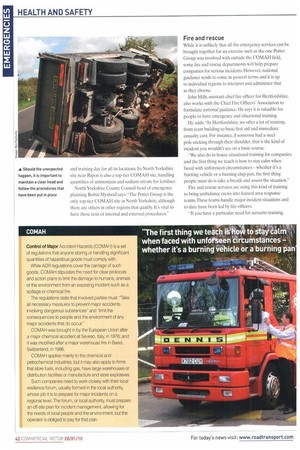COMAH
Page 42

If you've noticed an error in this article please click here to report it so we can fix it.
Control of Major Accident Hazards (COMAH) is a set of regulators that anyone storing or handling significant quantities of hazardous goods must comply with.
While ADR regulations cover the carriage of such goods, COMAH stipulates the need for clear protocols and action plans to limit the damage to humans, animals or the environment from an exposing incident such as a spillage or chemical fire.
The regulations state that involved parties must: "Take all necessary measures to prevent major accidents involving dangerous substances" and "limit the consequences to people and the environment of any major accidents that do occur" COMAH was brought in by the European Union after a major chemical accident at Seveso, Italy, in 1976: and it was modified after a major warehouse fire in Basel, Switzerland, in 1986.
COMAH applies mainly to the chemical and petrochemical industries, but it may also apply to firms that store fuels, including gas, have large warehouses or distribution facilities or manufacture and store explosives.
Such companies need to work closely with their local resilience forum, usually formed in the local authority, whose job it is to prepare for major incidents on a regional level. The forum, or local authority, must prepare an off-site plan for incident management, allowing for the needs of local people and the environment, but the operator is obliged to pay for that plan.
















































































































































